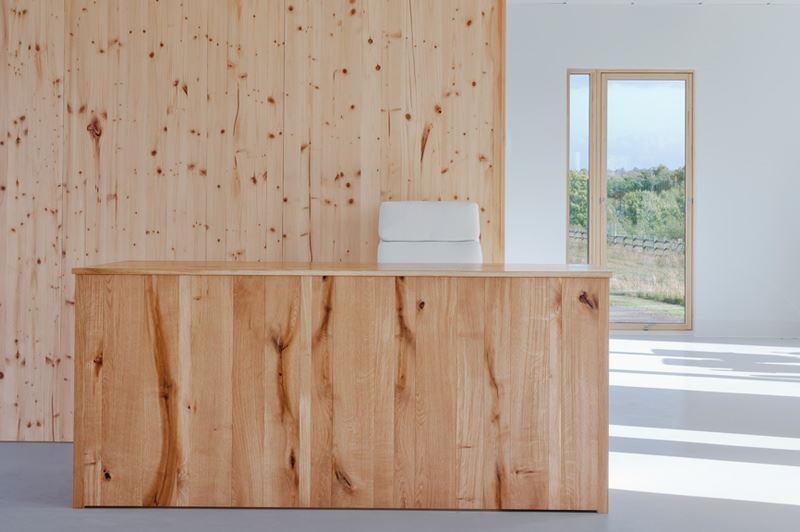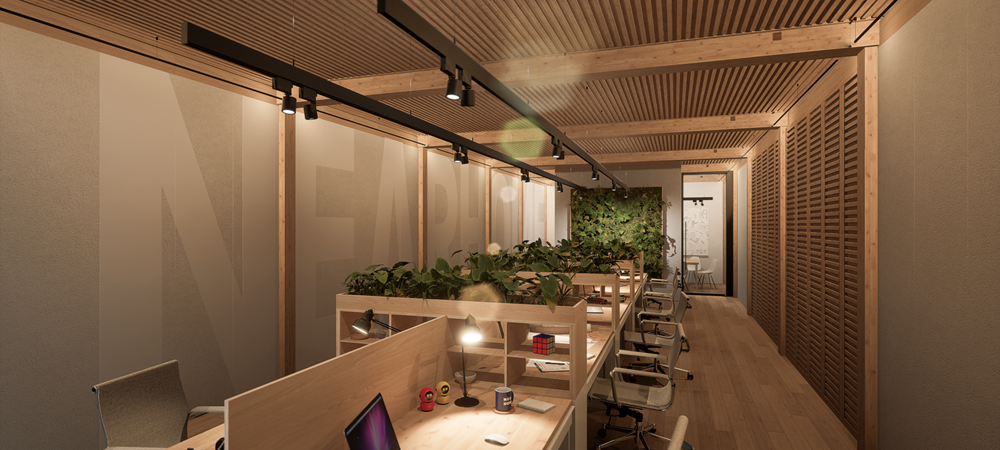Content
Retrofit: Lessons from Homeowners
Interested in the retrofit journey from the perspective of people who have decided to do it themselves? Discover lessons, insights, and surprises these homeowners encountered while retrofitting their houses - from series two of our Accelerate to Zero Podcast.

Lessons from Sarah Buchanan (Ep. 205)
Sarah Buchanan, who works as an impact manager in the retrofit team at BE-ST, shares her personal retrofit project in her new house. Having recently bought her home, Sarah talks about the lessons, tips and challenges from the perspective of someone just getting started.
Key moments:
- “Because of the skills shortage we can’t wait around for the industry to supply all the knowledge and skills that we need, so this is about people who are going through their own retrofit project, sharing knowledge.”
- “We deliberately plugged for an older build because we wanted to kind of go on that retrofit journey.”
- “What a retrofit assessment does is it looks at the whole house and it looks at lots of really detailed heat calculations. Your heat loss calculations ... it takes into consideration all the cost implications it can. It gives you a pathway and it starts with repair first.”
Lessons retrofitting their home:
- Utilise online platforms or forums where homeowners can share information, ask questions, and receive guidance on retrofitting projects. These platforms can provide access to valuable resources and a supportive community. Community-led organisations such as Loco Homes give you access to direct support in how to get started in retrofitting your home.
- Conduct a thorough retrofit assessment through a professional of your home's current energy performance, identifying areas of improvement and prioritising retrofitting measures. This assessment can help you plan the sequencing of retrofitting actions and identify potential issues beyond your home report.
- Stay informed about emerging financing solutions and incentives for energy-efficient retrofitting projects. Scottish residents can apply for a grant or interest-free loan to support their retrofitting project through Homes Energy Scotland.
- It is important to understand your home's typology. Gain knowledge about the specific construction and architectural features of your home, such as wall types (e.g., cavity walls, timber frames) and their implications for energy efficiency.
Insights on the wider issues
- The costs of retrofit on a broader scale are vastly underestimated and people do not have the resources to tackle individual retrofit on their own without support.
- Local authorities and Government could explore financial solutions, such as attaching energy efficiency to council tax or creating a second mortgage for energy efficiency improvements.
- One option for homeowners to explore is collective purchasing and procurement, particularly for tenements, to share costs and minimise disruption. Shared repairs platforms sponsored by councils such as Glasgow City Council and Edinburgh City Council’s Novoville are solutions that help with this.
- Currently individuals are left with the full burden to bear on retrofitting their home – even some contractors refuse to do certain work such as removing loft insulation.
- There are huge gaps in the market for a one-stop-shop in retrofit, particularly in finding contractors who have the expertise to address multiple aspects of retrofitting.
Lessons from Sarah and Michael Lewis (Ep. 204)
Sarah, who has a background in architecture and passive house design and her husband Michael, whose expertise lies in architecture and education, share a detailed history of the retrofit of their home – a 1930s end-terrace house in East Lothian, Scotland, which underwent a deep retrofit after its purchase in 2018.
Key moments:
- “It's amazing being in a place that feels kind of alive . . .There's stacked material everywhere, but there's something kind of vibrant about that too, which I think is really nice and probably healthier than the idea of an architectural project.”
- “The first time we then left the house after getting the MVHR unit installed and went back into a bedroom that has poor ventilation, it’s shocking how perceptibly stale the air feels. It's incredible how we get acclimated to these building environments that are unhealthy, and that just becomes the norm.”
- “Our children just don't seem to get nearly as ill as a lot of the children in school. We don't have as nearly as many colds and coughs, and they don't seem to linger.”
Lessons retrofitting their home:
- Budget constraints may require prioritising certain aspects of the project and taking on more DIY work to achieve desired results.
- Meticulous record-keeping during the demolition and construction process can be immensely helpful for future reference, troubleshooting and giving to any future contractors.
- Renovations and retrofitting projects can involve unexpected challenges and discoveries, such as uncovering previous DIY attempts and making decisions about what to strip back and rebuild.
- Retrofit projects can be perceived as disruptive, but they also provide an opportunity for empowerment and a deeper understanding of the building. Taking on the project yourself allows for learning, and a sense of pride in your home.
- The financial aspect of retrofitting should be considered carefully. Investing in your home and prioritising long-term comfort and energy performance may not always yield immediate financial returns, but it can bring daily joy and well-being.
Insights on the wider issues:
- Homeowners face challenges in not having the expertise to question or challenge contractors' advice. This knowledge gap can lead to subpar retrofitting outcomes and homeowners feeling at the mercy of contractors.
- Historically there have been issues with single-measure retrofits and contractors not adhering to proper installation techniques. This lack of quality control and knowledge can lead to incomplete or ineffective retrofitting work, further complicating the process and buy-in from homeowners.
- The need for better standards and regulations is evident, as minimum legal requirements often fall short of optimal retrofitting practices.
- Efforts are being made by organisations like BEST and Co-Action to address these challenges, fill skills gaps, and improve the overall quality of retrofitting projects. Practical training courses, such as the Passive House training, aim to provide hands-on experience and empower professionals to deliver high-quality retrofit solutions.
Lessons from Sal Wilson (Ep. 203)
In this episode Sal tells us about her own retrofit project of her family’s home in Cornwall, talking all things upskilling, supply chain dramas, and the Whole Building Approach.
Key moments
- “One little known thing is that there's no VAT on energy efficiency measures like insulation and heater controls.”
- “I didn't know how to find somebody. My Google searches weren't coming up with anyone local at all.”
- “We are custodians on this planet and none of us, despite any legal documents we may have, none of us own any of this land, all these buildings, all these walls. We're looking after them for a certain amount of time … The ultimate investment is making sure that these things and this place and this planet is a safe space for our kids to grow up into.”
Lessons retrofitting their home:
- It is beneficial to have a retrofit coordinator or guide who can provide expert advice and help navigate the challenges of the retrofitting process.
- Excessive insulation can lead to overheating, while inadequate moisture management can result in issues like mould and dampness. Achieving a balanced approach requires careful consideration of building materials, ventilation strategies, and insulation levels.
- Retrofitting often involves making changes to initial plans as new information and challenges arise. Flexibility and adaptability are necessary.
- Communication, coordination and trust between different parties involved, such as plumbers, installers, and organisations, is essential to ensure proper sizing, installation, and compliance with regulations.
- Having awareness of available grants, VAT exemptions, and other financial incentives can help homeowners make more informed decisions and manage the costs of retrofitting.
Insights on the wider issues:
- You need a multifaceted approach to retrofitting, where professionals have a comprehensive understanding of how various components of a building interact. There is an intersection of different disciplines to consider the holistic impact of retrofit measures. This idea widens to various elements of the built environment, such as materials, energy, water, and resilience.
- Sal’s experience demonstrates the value of continuous professional development and education. She mentions taking the ECB carbon retrofit course and encouraging their contractor to explore similar training opportunities.
- Building control and regulations, particularly related to energy efficiency, need to be more comprehensive and standardised to ensure quality and consistency in retrofit projects.
- There is a need for standardised and accessible information and support for homeowners undertaking retrofit projects, including clear guidelines on materials, processes, and energy efficiency measures.
- Sal faced challenges in finding local experts for retrofitting work. Organisations like Super Homes provided access to professionals in the field.
Accelerate to Zero Podcast - series 2
-
Ep 201: Marion Baeli
-
Ep 202: Tara Gbolade
-
Ep 203: Sal Wilson
-
Ep 204: Sarah and Michael Lewis





